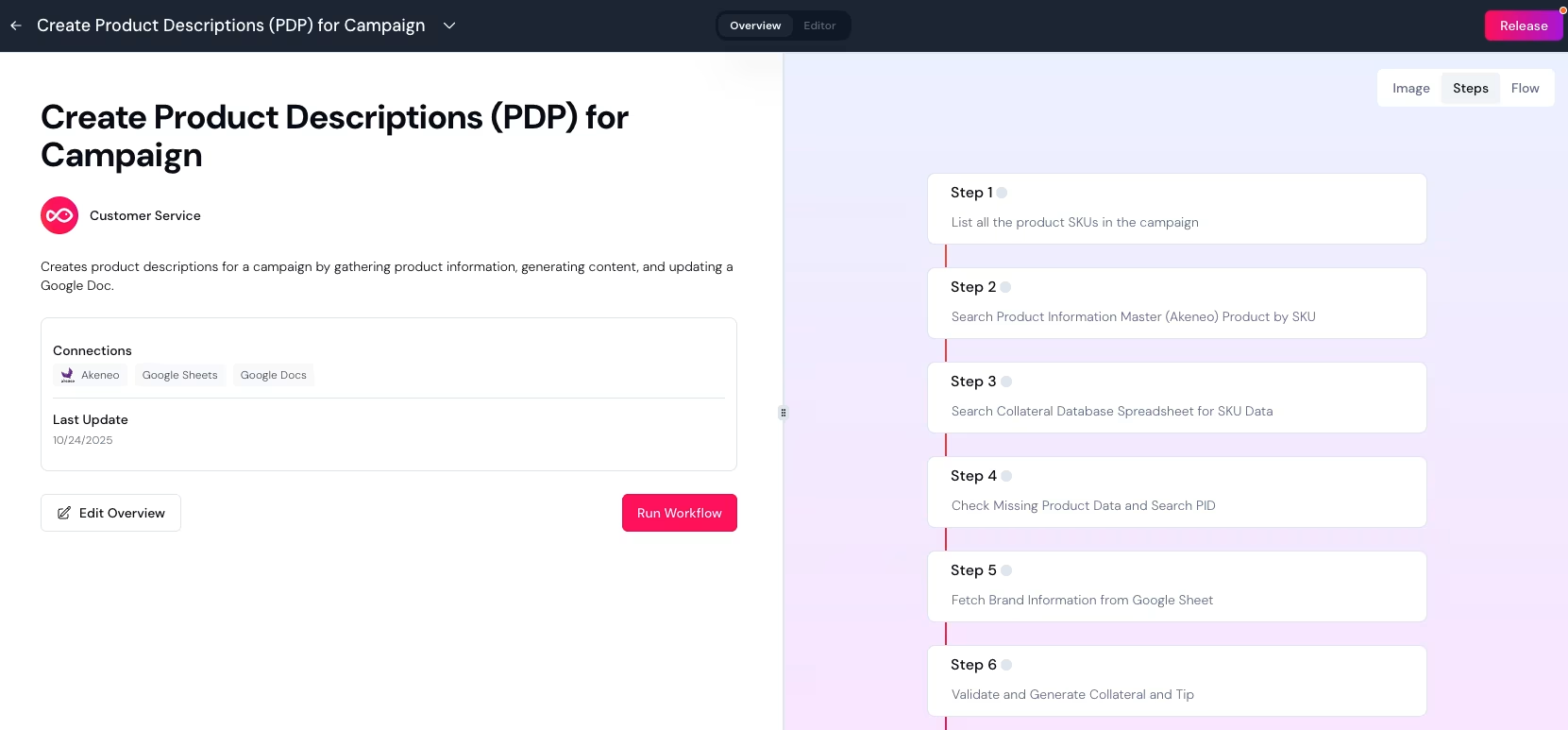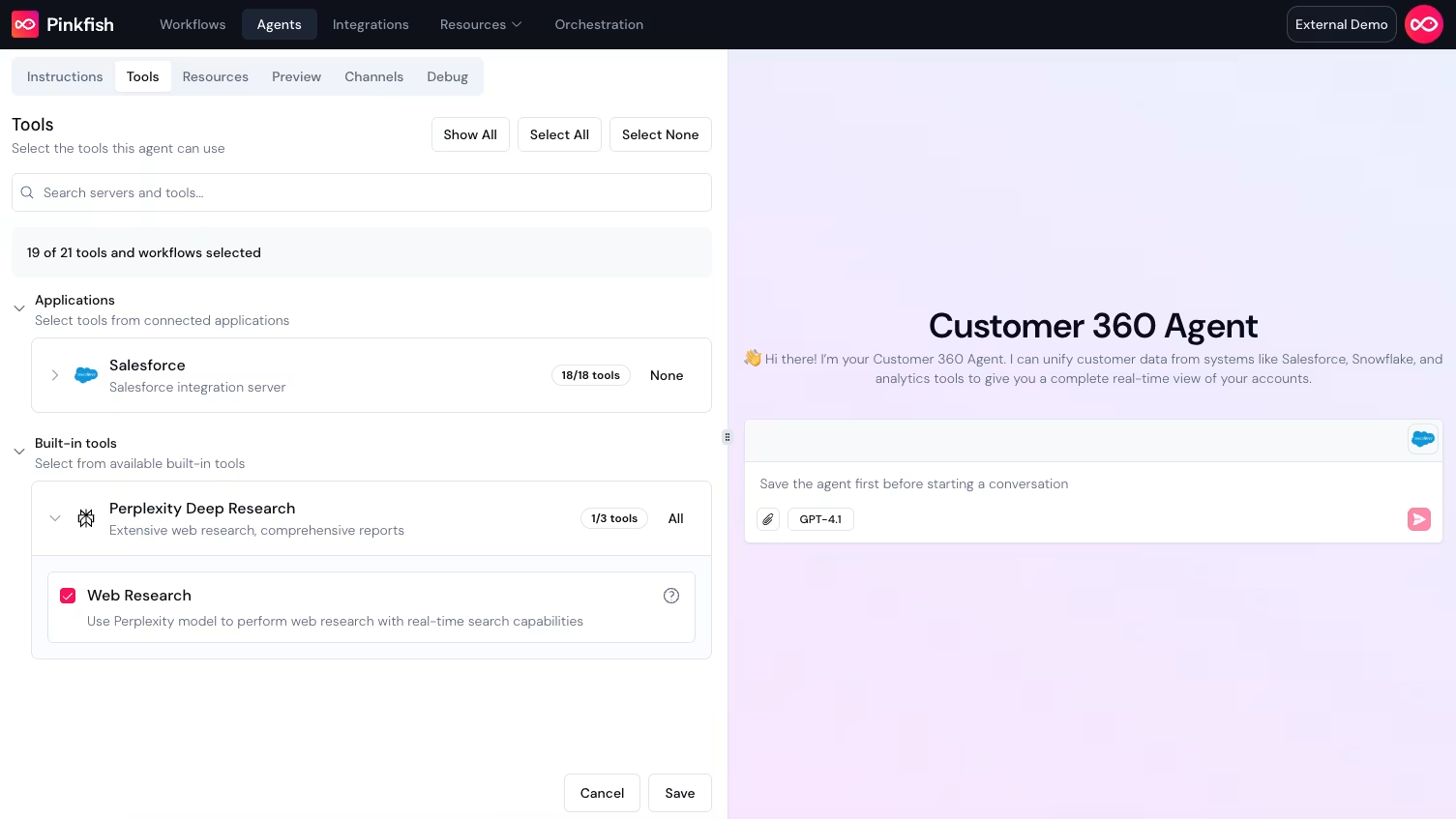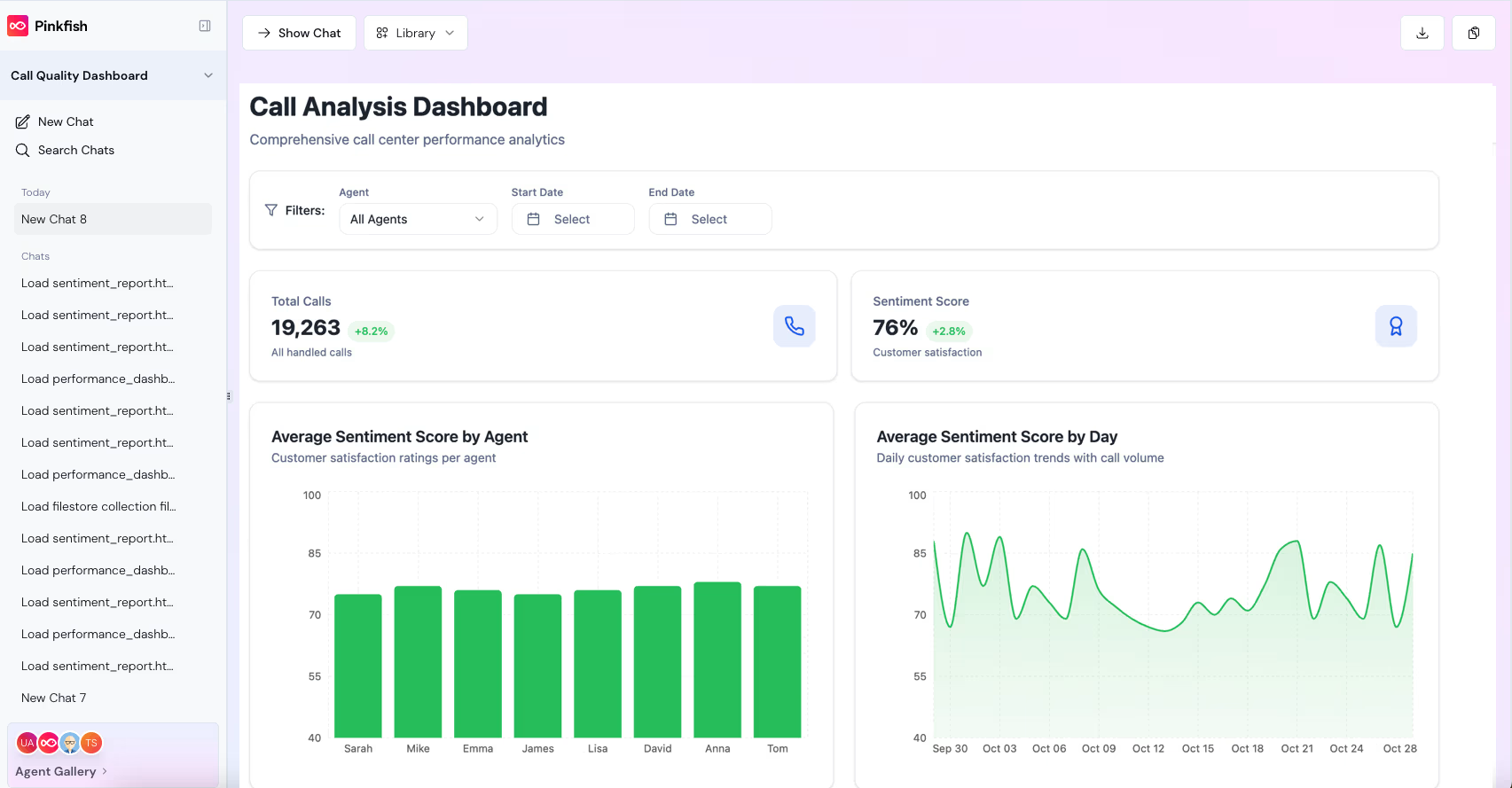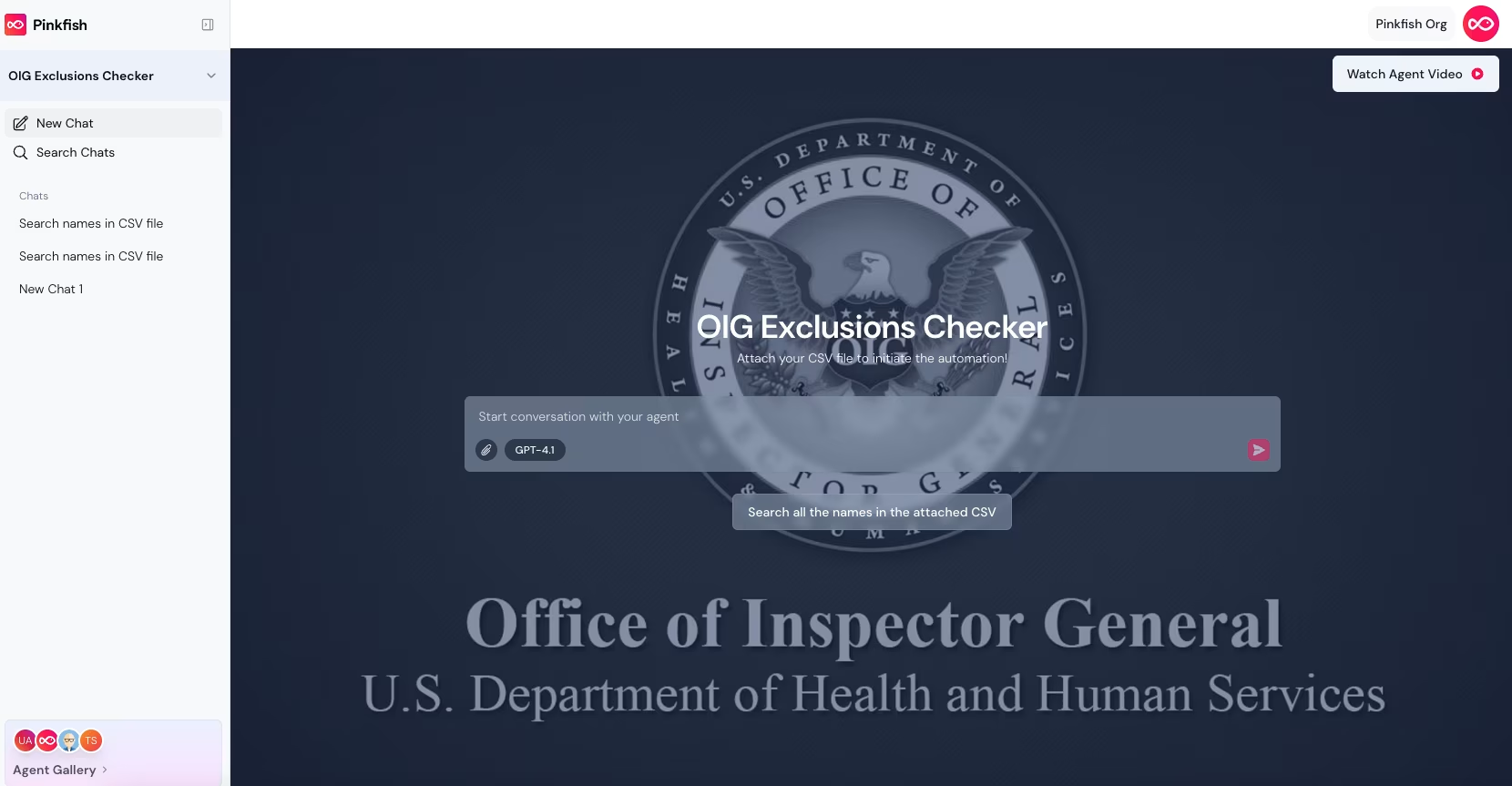How Forward-Deployed Engineers Make It Happen


A few years ago, when I was working as a Senior Solutions Architect, I sat in a conference room with a client who had just spent months implementing a new CRM. The system worked, but only because a handful of people had the time and determination to bend it into shape. They were smart, resourceful, and exhausted. What struck me then was that every company has talented people who see what’s possible but struggle to move fast enough to make it real.
That memory has stayed with me through my years leading projects, co-founding a consulting firm, and now building at Pinkfish. The pattern repeats: the ambition for change is everywhere, but the capacity to execute is not.
Ten years ago, during the digital revolution, some companies moved quickly into the cloud and built the foundations that carried them through the next decade. Others waited and watched. Now we are at the start of the AI revolution, and the same pattern is emerging. The difference is that this time, the pace is measured in weeks, not years.
At Pinkfish, our belief is simple: every company deserves AI.
Not the kind that sits in a lab or a pilot program, but AI that solves real problems, connects systems, and drives measurable outcomes. Yet many enterprises are not equipped to jump in alone. That is why we created the Forward-Deployed Engineer (FDE) team.
Forward-Deployed Engineers, or FDEs, are the bridge between possibility and execution.
They embed directly with our customers to bring agentic automation to life. While traditional engineers build capabilities that serve many customers, FDEs focus on unlocking many capabilities for one customer, fast.
They work shoulder to shoulder with enterprise teams, understand their business goals, configure and build within the Pinkfish platform, and ensure that AI is not just something a company experiments with, but something that powers its most critical processes.
FDEs are creative problem-solvers with deep technical range. They can build, integrate, debug, and ship, but more importantly, they translate business intent into working automation that delivers measurable value.
They are not consultants. They are builders in the field.
But the success of an FDE engagement is not only about helping customers start their AI journey. It is about enabling them to continue it on their own. A key part of the FDE team’s mission is to train and certify customer teams on agentic AI concepts and on the Pinkfish platform so they can design, build, and maintain automations independently.
The goal is not dependency. It is empowerment. FDEs make sure that every company they work with can build for itself and stay ahead for the long run.
I often think back to that client meeting from ten years ago. Getting things done back then was hard. Really hard. Everything required long projects, manual integrations, and layers of coordination. Platforms like Pinkfish, and a few others now emerging, simply did not exist.
Today, with what we call a responsible vibe coding approach, building automations, agents, or even full applications has become a hundred times easier. I could never have imagined being able to describe and build mission-critical enterprise workflows this quickly.
This shift makes the role of Forward-Deployed Engineers even more impactful. They not only help companies get started, but also empower them to self-serve and continue building their own automations over time.
There are many exciting areas within AI, but in my view, code-generation-based building is the most transformative. I see and experience this every single day. It has completely changed how we think about creating enterprise software. Builders at heart can now turn their ideas into real, production-ready systems. It truly feels like having superpowers.
Every enterprise begins its AI journey at a different stage. Some start by automating small, repetitive tasks. Others move into orchestrating workflows across systems. The most advanced are now deploying agentic automation, where systems can reason, act, and improve on their own.
However, there is a common misconception that agentic automation or AI agents are the only path forward. That is not true. Pinkfish offers a spectrum of possibilities - from deterministic workflows to AI-driven automations to fully autonomous agents. Each approach serves a different purpose depending on where a company is in its journey. Our upcoming blog post will explore this spectrum in detail, with examples and guidance on when enterprises should choose each approach.
At Pinkfish, our Forward-Deployed Engineers help customers move across this spectrum one step at a time, until AI becomes a seamless part of how work gets done. We work with you to recommend the best approach, and often the simplest one is the best way to go.
My Ten Favorite AI & Automation Use Cases from Last 10 Months
We’ve built a lot over the past ten months. Our customers and FDEs have pushed Pinkfish in ways I couldn’t have imagined. Every automation started with a real business problem and turned into something genuinely transformative.
But these are my top ten favorites not because they’re the biggest or flashiest, but because of the value they created, the critical problems they solved, and what they made possible in such a short amount of time.
Industry: Cross-Industry (Sales & Operations)
Value: The Customer 360 Agent brings together external deep research with customer data from Snowflake and Salesforce to deliver a real-time, unified view of every account. It surfaces actionable insights—top opportunities and risks, product adoption trends, and key account milestones—then automatically generates polished executive reports in PDF, PowerPoint, or HTML. What once took analysts days or weeks now happens in minutes, giving leadership teams immediate clarity and foresight.
Approach: Powered by large language models, this workflow interprets both structured and unstructured data to summarize insights and build executive-ready visuals. It blends deterministic integrations with contextual reasoning, ensuring that every decision is backed by accurate data and delivered with the nuance of human understanding.

Industry: Retail & E-Commerce (Beauty Supply)
Value: For a global retail customer managing tens of thousands of Product Detail Pages across multiple regions, content upkeep had become a full-time operation. The Pinkfish PDP Agent now automates the process end-to-end—pulling product data from internal systems, enriching it with AI-generated copy and attributes, validating everything against brand standards, and syncing it back into their commerce platform. The result: accurate, engaging, and fully compliant product content delivered in a fraction of the time.
Approach: The workflow runs on a set cadence aligned with each monthly product launch cycle. Once draft content is generated, teams can review and approve it before final publication to source systems. This combination of automation and human oversight ensures error-free updates, faster product launches, and a consistent brand voice across every digital storefront.

Industry: Professional Services and Legal Operations
Value: A large professional services firm needed a faster way to search thousands of vendor and client contracts. The Contract Semantic Search agent extracts clauses, renewal dates, and obligations, then allows teams to query them in natural language. “Which supplier contracts renew this quarter?” now takes seconds to answer instead of hours.
Approach: Uses Pinkfish’s RAG (retrieval-augmented generation) framework with document parsing, vector indexing, and permission-aware search. Enables real-time answers from sensitive data without compromising compliance.
Industry: Healthcare BPO
Value: A healthcare client operating patient support centers needed better visibility into call quality and customer sentiment. This workflow and agent combined solution analyzes transcripts, identifies patient intent, and summarizes interactions for compliance and training. Supervisors spend less time reviewing and more time coaching.
Approach: Integrates transcription, sentiment scoring, and deep call timeline analysis. To generate structured summaries that can be reviewed inside User Mode of Pinkfish in an Agent dashboard.

Industry: Manufacturing
Value: A global manufacturer was spending hundreds of thousands annually maintaining complex MuleSoft integrations. The FDE team built an automation to migrate workflows and APIs to Pinkfish, reducing cost, simplifying maintenance, and increasing agility.
Approach: Automatically maps MuleSoft XML to Pinkfish workflows reducing migration time from months to weeks.
Industry: Healthcare BPO
Value: Healthcare organizations are required to verify that employees and vendors are not listed on the Office of Inspector General (OIG) exclusion list. This agent automates that process, scanning monthly across call center employee lists, flagging potential matches, and notifying compliance officers.
Approach: The on-demand agent runs a series of workflows cross-reference personnel lists from vendor systems with OIG data sources using web scraping and browser screenshots. The automation produces a detailed compliance report.

Industry: Legal Services and Corporate Law Firms
Value: Law firms receive numerous new client inquiries requiring conflict checks before engagement. This automation handles the entire intake workflow—from parsing inbound emails to conducting comprehensive conflict checks across multiple databases, validating results with AI, and sending appropriate responses to both clients and internal teams. It eliminates manual data entry, reduces conflict check turnaround time from hours to minutes, and ensures compliance with ethical obligations while maintaining detailed audit trails.
Approach: The automation orchestrates a workflow that parses incoming emails, extracts stakeholder information from attachments using OCR and document analysis, and cross-references client data against conflict databases and State business registries. AI models validate potential conflicts to eliminate false positives, then dynamically select appropriate email templates based on conflict status and available information. The system automatically generates and sends personalized responses to clients and detailed internal notifications, maintaining full email threading and audit trails throughout the process.
Industry: Cross-Industry (HR and IT Operations)
Value: The classic but essential workflow. The Offboarding Agent automates employee exits across systems, disabling accounts, collecting assets, and updating records. It ensures no steps are missed and improves compliance posture for every department.
Approach: Orchestrates actions across HRIS, IT, and identity platforms like Okta and Google Workspace. Reduces risk, ensures accuracy, and saves operations teams hours per offboarding event.
Industry: Retail & E-commerce
Value: A marketing BPO used this automation to match influencer YouTube URLs with product information. The workflow identifies products featured in a video and maps them to corresponding items in a product catalog or CSV file.
Approach: The automation combines social video and image search to instantly identify and link products from the catalog, enabling them to appear on the website alongside the influencer’s content—allowing customers to purchase instantly.

Industry: Cross-Industry (HR and IT Operations)
Value: The classic but essential workflow. The Offboarding Agent automates employee exits across systems, disabling accounts, collecting assets, and updating records. It ensures no steps are missed and improves compliance posture for every department.
Approach: Orchestrates actions across HRIS, IT, and identity platforms like Okta and Google Workspace. Reduces risk, ensures accuracy, and saves operations teams hours per offboarding event.
Every decade brings a defining shift in how companies work. Cloud transformed where systems lived. Mobile transformed how we interacted. AI is transforming who builds and how fast ideas become reality. The difference now is speed. The companies that start today will be the ones others study tomorrow.
At Pinkfish, we believe every company deserves AI that actually works for them — not pilots that stall or proof-of-concepts that never scale, but real automations that deliver measurable business impact. Our Forward-Deployed Engineers make that happen. They embed directly with your teams, build side by side, and leave your organization stronger, faster, and ready to lead.
You don’t need another strategy deck or a year-long transformation plan. What you need is momentum and a trusted partner who can help you move fast, responsibly, and with purpose. That’s what Pinkfish delivers.
The AI revolution won’t wait. Those who act now will define their industries for the next decade.
Let’s start building because ten years from now, you shouldn’t be saying, “If only we had started today.”